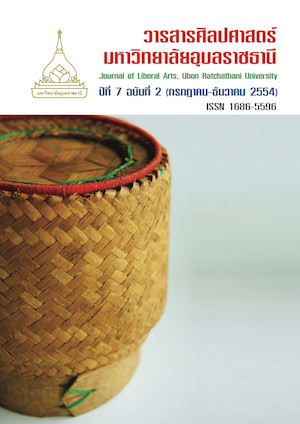A Strategic Approach to Manage the Cultural Heritage Values of Suansunandha
Main Article Content
บทคัดย่อ
จุดมุ่งหมายของการศึกษาครั้งนี้ คือ(1) เพื่อสำรวจคุณค่ามรดกทางวัฒนธรรมที่เป็นรูปธรรม และนามธรรมของสวนสุนันทา(2) เพื่อประเมินองค์ประกอบที่มีความสำคัญของคุณค่ามรดกทางวัฒนธรรม(3) เพื่อประเมินผลกระทบจากการท่องเที่ยวทางวัฒนธรรม และการจัดการทางวัฒนธรรม และ(4) เพื่อร่างนโยบายสำหรับการจัดการการท่องเที่ยว และคุณค่าทางวัฒนธรรมของสวนสุนันทา ขั้นตอนการศึกษาเริ่มจาการทบทวนหลักฐานทางเอกสารที่เกี่ยวข้องกับประวัติของสวนสุนันทา การสำรวจลักษณะทางกายภาพของสวนสุนันทา การสัมภาษณ์ผู้ให้ข้อมูลหลักจำนวน 15 คน ด้วยแบบสัมภาษณ์แบบกึ่งมีโครงสร้าง และการสำรวจความเห็นของผู้มีส่วนเกี่ยวข้องในสวนสุนันทาจำนวน 396 คน ด้วยแบบสอบถาม การเก็บทั้งข้อมูลเชิงคุณภาพ และปริมาณใช้วิธีการสุ่มตัวอย่างแบบบอลหิมะ และแบบสะดวกตามลำดับการวิเคราะห์ข้อมูลใช้การวิเคราะห์และการจัดแสดงข้อมูลในรูปแบบของตาราง แลโครงข่ายสำหรับข้อมูลเชิงคุณภาพ และใช้ค่าความถี่ ร้อยละ และค่าเฉลี่ยสำหรับการวิเคราะห์ข้องมูล เชิงปริมาณ ผลการศึกษาชี้ให้เห็นว่าสวนสุนันทาได้ผ่านการเปลี่ยนแปลงมาแล้ว 6 ช่วง ความสำคัญทางวัฒนธรรมของสวนสุนันทาประกอบด้วยคุณค่าทางประวัติศาสตร์ สุนทรียภาพ สังคมและวิทยาการ อาทิ การเป็นที่ประทับของเจ้านายฝ่ายในของรัชกาลที่ 5 อาคารที่ประทับเป็นแบบวิลล่าซึ่งเป็นองค์ประกอบของผังบริเวณแบบโรแมนติคของสวนสุนันทา การวิเคราะห์ผลกระทบจากการจัดการมรดกทางวัฒนธรรม เช่น สวนสุนันทาควรส่งเสริมผู้เกี่ยวข้องมีส่วนร่วมในการตัดสินใจที่เกี่ยวเนื่องกับคุณค่ามรดกทางวัฒนธรรม การวิเคราะห์ผลกระทบจากการท่องเที่ยวทางวัฒนธรรม เช่น การท่องเที่ยวอาจสร้างรายได้ การจ้างงาน และอาจทำให้อาคารประวัติศาสตร์ทรุดโทรม โอกาสและข้อจำกัดควรนำมาเป็นแนวทางการกำหนดนโยบายการจัดการด้านการอนุรักษ์ การบริหารนักท่องเที่ยว และการสื่อความหมายของสวนสุนันทา


